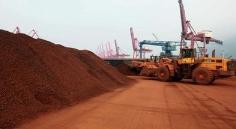Every year, potatoes in Idaho require millions of gallons of water to be washed, peeled and sliced, and then processed into various products such as mashed potatoes, animal feed, and industrial starch. But potato processors in Idaho must treat and dispose of large amounts of wastewater containing organic matter, silt and sand. But now, a new study by the Idaho National Laboratory suggests that potato wastewater may be a low-cost food source for special bacteria that can be used to recycle high-tech equipment, industrial catalysts and other rare earth elements. Rare earth elements are a class of metal elements that include everything from cell phones and computers to wind turbines and electric cars, including neodymium and dysprosium. These elements are difficult to obtain, making American manufacturers vulnerable to supply shortages. A research team at the Idaho National Laboratory has developed an environmentally friendly method that can use a bacteria called Gluconobacter oxydans to recover rare earth elements. After being supplemented with nutrients, Gluconobacter produces organic acids, which dissolve the metal elements in the surrounding materials and pull them into the solution. This process is called "biological leaching." Previously, Idaho National Laboratory researchers Vicky Thompson and David Reid conducted an economic analysis of their bioleaching process and found that glucose used to feed microorganisms was the largest expense, accounting for 44 of the total cost. %. In a recent study, Thompson Reid and senior scientist Yoshiko Fujita compared the performance and cost of glucose with other nutrient sources (ie potato wastewater and corn stalks) (leaves, stems and cobs left after corn harvest) . Researchers from Lawrence Livermore National Laboratory and the University of Arizona also participated in the study. Research scientist David Reid: "The biggest challenge is,'How do we reduce costs?' One of the things we are doing is using agricultural residues and food waste as a source of nutrients for these microorganisms. In some cases, waste It is also an industrial problem." "Currently, potato processors need to get rid of this waste water. The amount of waste water treated depends on the amount of waste water they can dump."
Reid and his colleagues provided bacteria with three different sources of nutrients and measured how the resulting mixture recovered rare earth elements from a fluidized catalytic cracking catalyst (a substance used in petroleum refineries). The performance of potato waste is almost equal to that of glucose, while corn stover is less effective. The researchers then estimated the cost of building and operating an industrial-scale rare earth element recovery process using each nutrient source. Economic analysis shows that corn stover is the most economical (22% lower cost than glucose), followed by potato wastewater (17% lower cost). For potatoes in Idaho, these numbers seem to be bad news, and for corn, these numbers seem to be good news, but there is a big caveat.
Vicky Thompson, Distinguished Engineer at the Idaho National Laboratory: "The factor driving the economic development of potato waste is to transport it to the refinery in Salt Lake City. If you can place the refinery together with the potato processing facility, transport this The cost of planting 200 miles of liquid will disappear." Similarly, refineries in the Midwest can be housed with a source of corn stover.
Yoshiko Fujita: "Creating new technologies to recover rare earth elements from waste is great, but there are all other factors. If we can't collect materials economically, it really doesn't matter." Another place that improves economic efficiency is potato processing plants.
David Reid: "We did not consider any economic advantages of the potato processing plant. This may make our process more economical. It reduces or eliminates the cost of disposal of potatoes and catalysts."
Finally, both corn stover and potato wastewater are cheap sources of nutrients for bacterial growth and have the added benefit of reducing waste. Researchers are exploring whether municipal solid waste can be used as another source of food. "One waste stream is used to treat another waste stream. In the process, we create a product: these metals that can be used to produce more electronic products." This research was funded by the Institute of Critical Materials. The Institute is a division of the Energy Innovation Center, led by the U.S. Department of Energy's Ames Laboratory, and supported by the Office of Advanced Manufacturing of the Office of Energy Efficiency and Renewable Energy, which supports early applied research to promote innovation. Play a role in the US manufacturing industry and promote US economic growth and energy security. CMI seeks ways to eliminate and reduce its dependence on rare earth metals and other materials that are disrupted in the supply chain.




